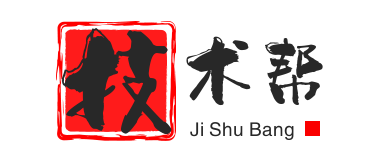PHP是一种流行的服务器端脚本语言,广泛应用于网站开发中,在PHP编程中,继承是一个重要的概念,它允许子类继承父类的属性和方法,PHP是否支持多继承呢?如何实现类似多继承的功能?下面我们来详细探讨一下。
需要明确的是,PHP本身并不支持多继承,在PHP中,一个类只能继承一个父类,这种设计使得PHP的面向对象编程(OOP)更加简单、清晰,在某些情况下,我们可能需要从多个类中继承属性和方法,为了实现这一需求,PHP提供了一些替代方案。
一种常见的替代方案是使用接口(Interface),接口是一种定义一组方法的规范,类可以实现接口,从而实现这些方法,通过实现多个接口,一个类可以继承多个接口中的方法,达到类似多继承的效果。
以下是一个简单的例子来说明如何使用接口实现多继承:
interface Animal {
public function makeSound();
}
interface Mammal {
public function giveBirth();
}
class Dog implements Animal, Mammal {
public function makeSound() {
echo "Woof!";
}
public function giveBirth() {
echo "Puppies are born.";
}
}在这个例子中,我们定义了两个接口:Animal和Mammal,Dog类实现了这两个接口,从而继承了它们的方法,这样,Dog类就可以使用makeSound和giveBirth这两个方法了。
除了接口,PHP还提供了另一种实现类似多继承功能的方法—— Traits。
Traits是PHP 5.4.0引入的一个新特性,它可以被多个类共同使用,Traits可以看作是类的部分实现,它允许开发者将多个Traits组合到一个类中,从而实现类似多继承的功能。
以下是一个使用Traits实现多继承的例子:
trait Eat {
public function eat() {
echo "Eating...";
}
}
trait Run {
public function run() {
echo "Running...";
}
}
class AnimalWithTraits {
use Eat, Run;
}
$animal = new AnimalWithTraits();
$animal->eat(); // 输出:Eating...
$animal->run(); // 输出:Running...在这个例子中,我们定义了两个Traits:Eat和Run,AnimalWithTraits类使用了这两个Traits,从而继承了它们的方法,这样,AnimalWithTraits类的实例就可以调用eat和run方法了。
需要注意的是,当多个Traits中存在同名方法时,会产生冲突,为了解决这个问题,PHP提供了“解决方法”语法,允许开发者指定使用哪个Traits中的方法。
以下是一个解决方法冲突的例子:
trait Eat {
public function eat() {
echo "Eating like an animal...";
}
}
trait HumanEat {
public function eat() {
echo "Eating with chopsticks...";
}
}
class Human {
use Eat, HumanEat {
Eat::eat insteadof HumanEat;
HumanEat::eat as humanEat;
}
}
$human = new Human();
$human->eat(); // 输出:Eating like an animal...
$human->humanEat(); // 输出:Eating with chopsticks...在这个例子中,我们定义了两个有同名方法eat的Traits:Eat和HumanEat,在Human类中,我们通过“解决方法”语法指定使用Eat中的eat方法,并将HumanEat中的eat方法重命名为humanEat。
虽然PHP本身不支持多继承,但我们可以通过接口和Traits这两种方式来实现类似多继承的功能,在实际开发中,开发者可以根据具体需求选择合适的方案。


